On The Way to Santa Fe
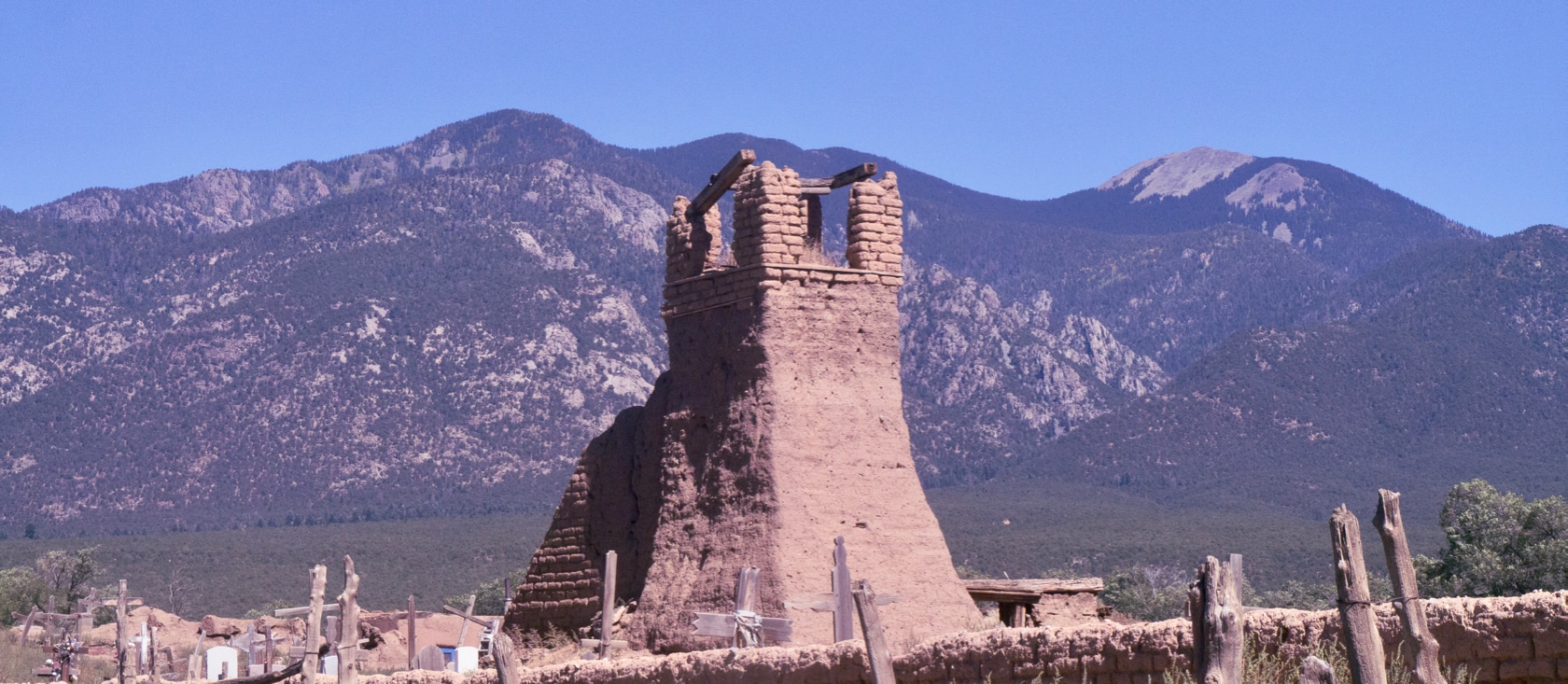
You Need a Vacation
Imagine that you are a modern worker, hoping for a promotion: what do you do? You work all day, then you bring work home and work at night; you work on Saturdays, and cut time out for your family, making commitments and keeping them but never being available outside of them; you take on responsibilities not yours, and get it done for the sake of the company; and, most of all, you don't take a vacation, because you have so much to do and so little time, and all of it is so equally important.
Then, a year and a half or two years later, you're burnt out. You snipe at your family, you sleep poorly, you've put on weight and stop exercising. You're beyond caring about the company and your responsibilities, and you just don't do your work well; nor do you even try to do the hobbies that used to give you happiness and peace. Maybe they've even hired someone above you, because you're too essential to the day-to-day to be promoted.
You leave that job, find a new one, one that gives you mental and physical space from those bad work-life choices you made.[1] And you think, wanting to keep your nice new job, and your beautiful wife and son: how about, this time, you take a vacation?

Now Suppose The Things Go Wrong
So you pick a place: you live in California, and you like old places, and you didn't grow up around here so you want to see the Southwest; you pick Santa Fe and Taos, in New Mexico.[2] You're a reasonably organized and competent adult, so you plan the whole thing out, book flights, rent cars, make yourself an itinerary — you have a whole set, regimented blueprint for your trip, just like you do for every day and every project at work.
Now, suppose things go wrong from the beginning. Your flight into Phoenix is delayed, so you'll miss the flight from Phoenix to Santa Fe. They can get you from Dallas to Santa Fe, landing at 10:30pm, but here's the catch: you'd planned to get a car at Santa Fe[3] and then drive to Taos, so you don't have a hotel in Santa Fe, and all the car places will be closed by that hour, so you can't drive to Taos.
There's a moment of frustration, but then you realize: you're on vacation. You're on vacation because the other way of doing things didn't work. So don't handle this that way: relax. Have fun. You're on an adventure!

So you get re-booked to Albuquerque. And things start going right: you're able to cancel your car reservation for free, and make a new one that picks up at Albuquerque.[4] You land late, and your trip is more than an hour longer, but you drive the winding, windy mountain road in the dark and you make it to Taos. Your room is there and lovely.
The plan for the next day is to go to Taos Pueblo, and you checked it was open beforehand (it closes to tourists from time to time because it's an actual community in which actual people live, not some zoo — although your visit may say otherwise). Except, you drive there and it's closed. Again, you could be frustrated: what's worked well so far? But, again, you're on vacation. So you pull off on to the side of the road and look at that comprehensive itinerary you made. Now it's not a schedule anymore, but it can be a statement of intention — no, that's too work-like a phrasing, it's a bunch of things you'd like to do. So, do them in another order. You pull into a gravel parking lot and fire up Google Maps. There's one thing that is going right: you get cell signal, out in the middle of nowhere.[5] You pull up your list of places you'd like to see — neé itinerary — and find the closest ones.
And you put on a fun podcast, and drive down the road, and now you're actually on vacation.
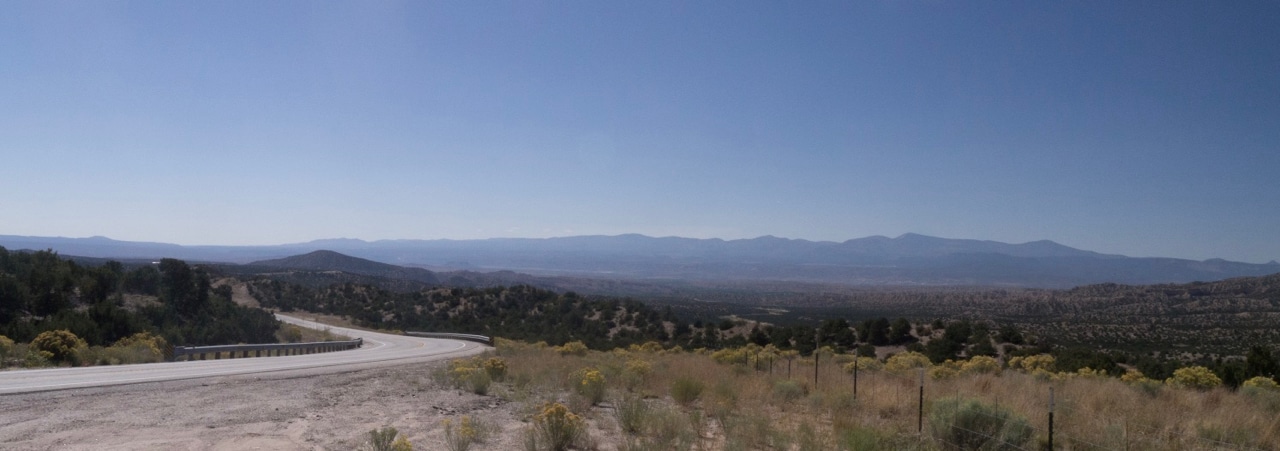
The Places You'll Go
Your first stop is the Martinez Hacienda, a 17th-century farm restored as a museum. Let's face it: adobe is scenic, with its enormous, protruding viga beams and unusual rounded edges. You're amazed to see how houses back then were fortresses, featuring thick walls and room for supplies to wait out a siege (or a long winter).[6] It's difficult to understand how Spanish pioneers chose to come to such a thankless environment, staying in solitude a months-long journey from even Mexican settlements, with neighbors who ranged from mildly welcoming to hostile.

Down the road about 20 minutes is the place you must go if you're going to Taos, the San Francisco de Asis church. The famous one that Ansel Adams took a picture of, and, since him, everyone who fancies themselves a photographer when they come through this part of town. You drive past it the first time, because you assumed the church was in a large, open field, the kind where Adams could set his big dry-plate field cameras easily; instead, it's tucked in between houses and stores, a red dirt parking lot in front. You try to find all the angles for your own photo, although the sun is straight overhead and staring right at you in every shot.
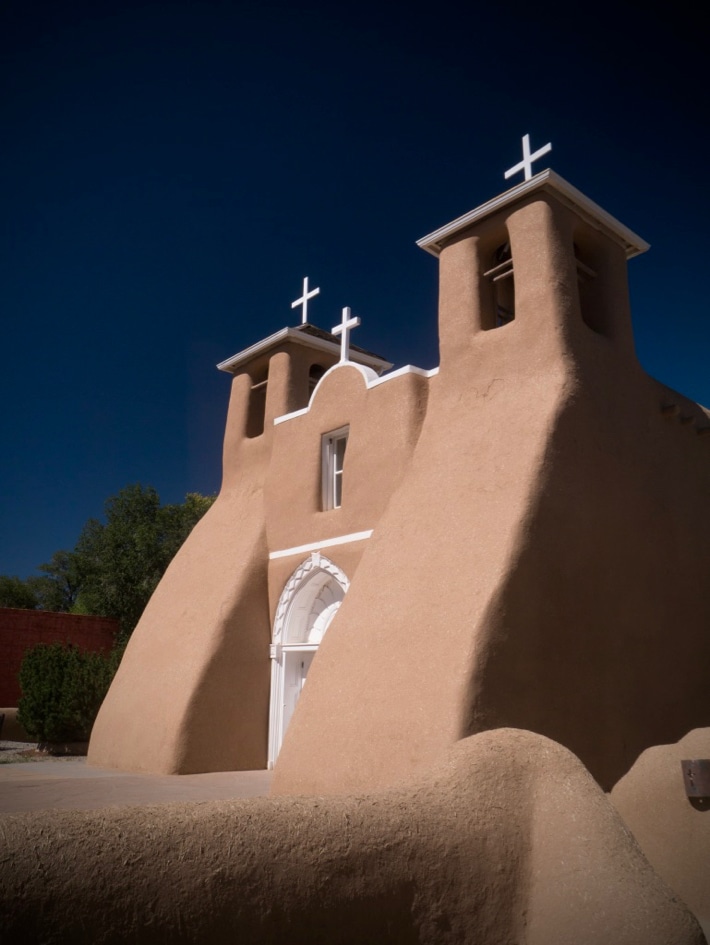
The tumbled-down buildings all around are scenic, too. They get their own share of space on your camera's SD card.
Afterwards, you spend the afternoon walking around downtown Taos. You eat peanut noodles with Hatch chiles from a cart in the street, drink cola flavored with piñon nuts. You try artisanal chocolate, sampling beans from different parts of the world and discovering how different the same bean, fermented the same way, mixed with the same sugar, can taste. You try New Mexican wine, which has the alcohol and fullness wine gets when grapes are left on the vine far into the harvest season. You see blankets and silver and even trick your wife into thinking you bought a leather cowboy hat (you have one of those heads that looks awful in almost all hats).
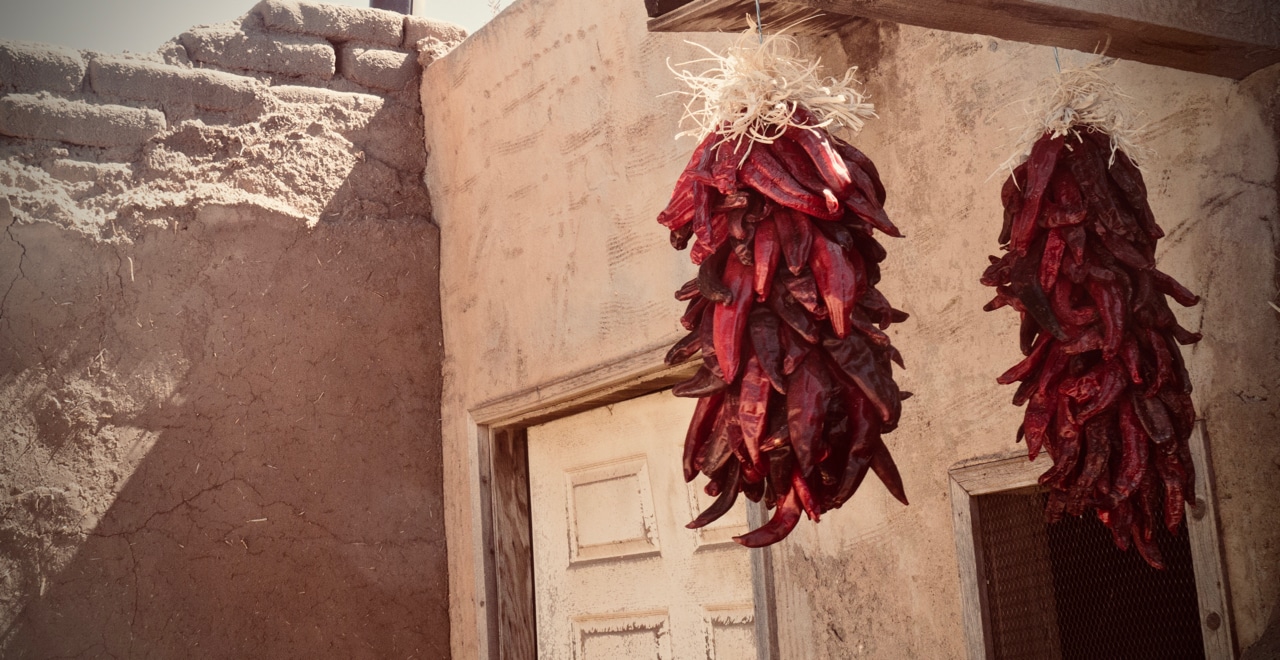
In the evening, you have dinner at a nice restaurant overlooking Taos's plaza. Last night, coming in late, you had a delicious chile relleno with local beers at a bar; tonight, your pork adovada is nothing but salt, your margarita is oversweet and overwrought.[7] But the night air is desert-brisk and your hotel room is cozy and the evening is a success.
The next day, you drive to Santa Fe, on the famous High Road that wends its way through mountain passes and tiny villages. First stop: back to Taos Pueblo, a tall adobe village inhabited by native peoples since as early as 1000 AD. It's a gorgeous community, carefully laid out, with water and farmland and vistas, and you think: no wonder the Puebloan people survived in their ancestral homes, look at the size of this place compared to that little Martinez Hacienda.[8]
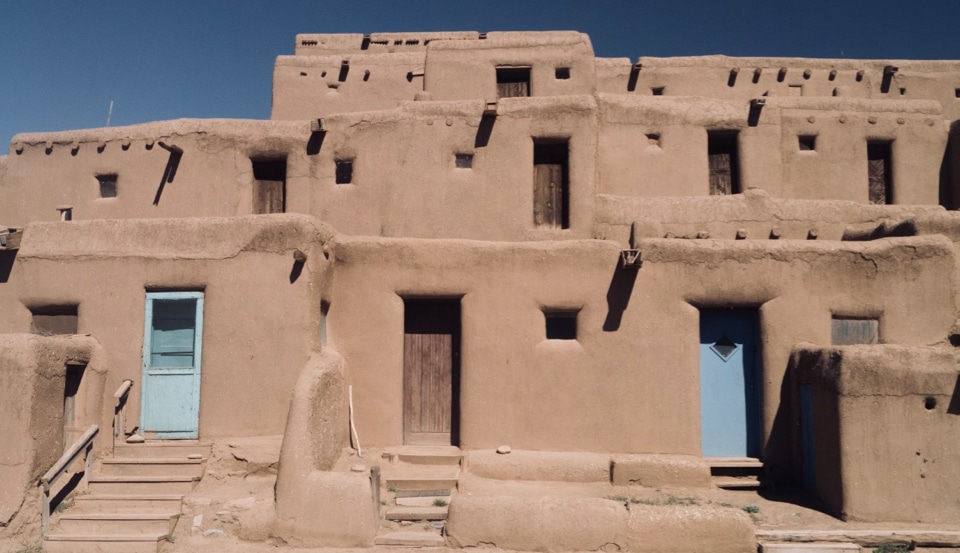
You came, frankly, just because a pueblo is something you've never seen, because the architecture looks amazing and you want to see the stepped abobe against the desert vistas. But, as you visit the artisans in the community and have some delicious fry bread, you realize you're in real homes, and you ask the people there: where does your work come from? What are your inspirations? What is your connection to this community? What do I not know to ask, that I should know about your community and its history? What you learn could fill a book.
The rest of the High Road is filled with with aspens turning to yellow, adobe houses, weathered clapboard, and tiny churches nestled in the middle of muddy towns perched on the side of hills. Rolling hills, dotted with the scrub trees that grow at altitude, give way to purple-blue mountains in the hazy distance. You stop by a few roadside vistas, a few tiny churches, and spend a while at the famous Santuario de Chimayo, a rather odd and decidedly not old-feeling historic Catholic church and reliquary. But, the adobe-and-tile exterior does not let you down.
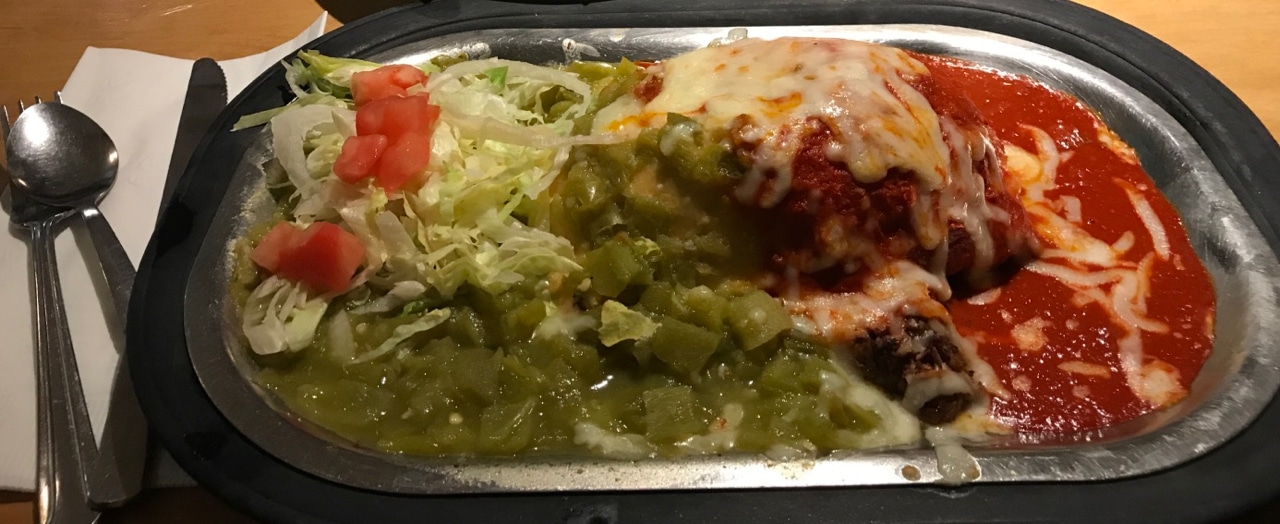
Finally, you reach Santa Fe. After this time in Taos, it feels tremendously large. Two or three turns later — more than there were to make in Taos! — you find yourself at you cute hotel. It's late, and the first order of business is an amazing meal. There's a well-known New Mexican food place nearby, famous for its magaritas; there's also a 40-minute line out front. You hover around the bar, drink some margaritas, make some friends, and finally grab a spot, then order sopapillas with green and red chile. The food is amazing. Stomach full, you head straight to bed.
The next day is your last with the car, so it's all about the things around Santa Fe. First stop: Meow Wolf, which is something between an art installation and a museum and a playground for adults only. You wend your way around the maze-like alternate universe inside — a retro house with trap doors that lead to exotic worlds of trees and neon and optical illusion — and then get on the road to something completely opposite — Rancho de los Golondrinas, a large 17th century farm and ranch and trading post, with tours from hosts in period garb. You learn how to weave and see the amazing, thick wool from the early sheep the Spanish brought to the area. Rushing before the sun goes down — and before a storm comes in — you drive to the trailhead of the short hike to the La Cienguilla Petroglyph site, seeing thousands-of-years-old rock carvings. You look at the six carvings at some length, then, on a whim, take a different path down the hill... fortunately, since that's where you find the dozens of drawings that are clearly the main attraction. The Rancho is cool, but Meow Wolf and the Petroglyphs are mindblowing, in completely opposite and yet completely similar ways.

You make it to the car just as the sky opens up in a sudden desert downpour, and are at the rental car drop-off a dozen minutes later. Although you're 20 minutes past your dropoff time, they don't bill you extra, and even drive you back to your hotel (the runner explains he's a Lyft driver and would just have picked up if you called a car anyway).
Exhausted, you stumble into a barbecue joint... and are surprised when a guitarist steps up and plays amazing live blues. The chile- and piñon-infused sauce is amazing, the meat falls cleanly off the ribs the moment you pick them up, and steam rises from the delectable brisket. You sleep the deep sleep that a big meat dinner brings.
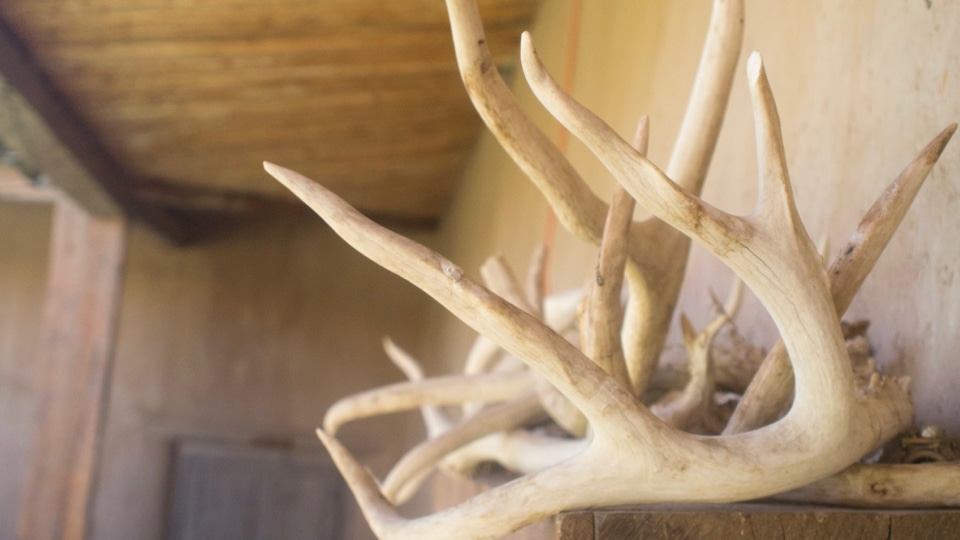
Next day, you sleep in, relax, recharge, and then walk the few blocks to Santa Fe's historic district. First stop is the Georgia O'Keeffe museum, the only museum in the entire world dedicated to the work of a single female artist.[9] You've always appreciated that O'Keeffe is a talented artist, but never really understood why she was special. This carefully-curated exhibit walks you through her whole life, and you see every careful artistic decision and growth that leads from her first sketches to her watercolors and oils and even her much-thought-out home. Suddenly you understand what she created, and she rises from "interesting" to "favorite." How many other artists deserve this treatment?
Then, because art, it is on to the IAIA Museum of Contemporary Native Arts. New treatments of color and pattern and juxtapositions of cultural artifacts that frankly make you, as a white guy, uncomfortable[10] opened my mind and fascinated me. There are vast parts of this country of which you know nothing, and that's exciting.

Of course, you can learn some of that, so off to The New Mexico History Museum, with its encyclopedic exhibits on the Native American communites who lived in the area for centuries, and how they lived; giving over to the Spanish, and the surprising immigration of large numbers of conversos to the lawless and free northern frontier of Nuevo Mexico; then to Texans and Americans, who massively grew the population of the area and destroyed the delicate balance of European and Native communites and commerce; to the growth of the United States and the expansion of White Northern European culture during the 20th century, turning a part of the country that had been Native and Latin into the Cowboy west; a center of the Manhattan Project; and a home to hippies. And you stand fascinated, reading about and watching videos of Reies Lopez Tijerina an activist in the Chicano civil rights movement[11] of the 1960s whom you had never heard of.
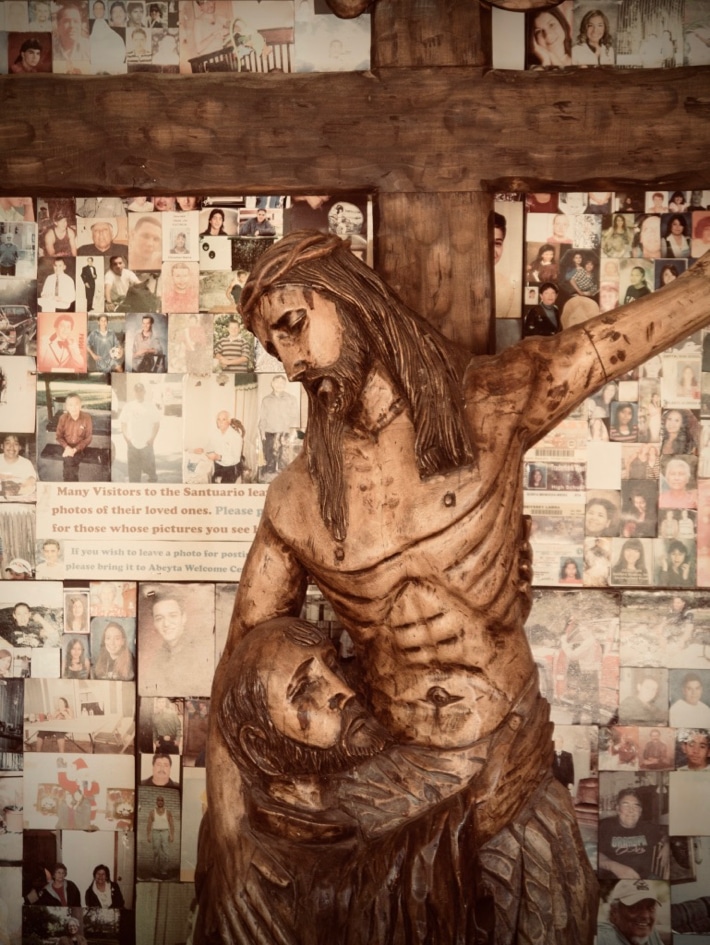
The next day is back to the historic downtown. You start at The New Mexico Museum of Art and see unexpected, amazing abstract impressionist work from Native- and African-American artists you've never heard from. Then it's churches all day long, from the vast and beautiful Cathedral Basilica St. Francis of Asisi to the Loretto Chapel with its amazing hand-carved wooden staircase, to the San Miguel Chapel, supposedly the oldest in the country. They're all bright, beautiful churches, with amazing wood carving and the unique statue and icon styles of the Santa Fe area.
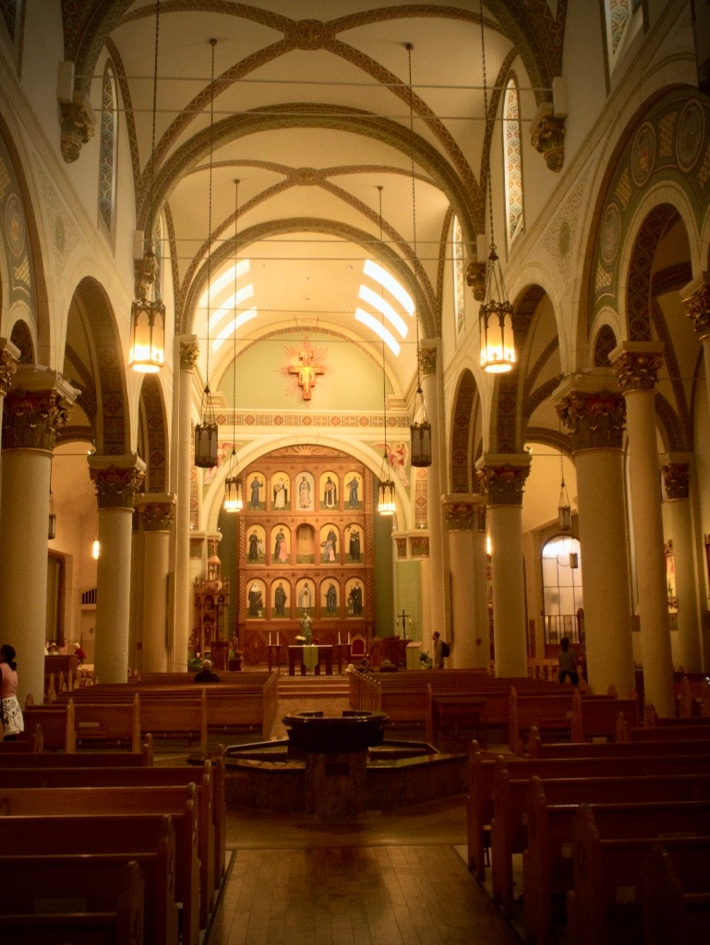
And rest. You sit in your lovely hotel room some, and read book after book, and drink tea and rest. Because vacations are about resting. And good food. Speaking of, you return to Tomasita's for great New Mexican food and a couple of Margaritas.
The flight out is middle of the next morning, and Santa Fe's airport is tiny and adorable. You go from a one-room gate area with a single vending machine to an Embraer to Phoenix to a 737 and you're home. LA stretches out under below you as you come in to land, vast beyond anything you've seen for the last week. Gray concrete vistas replace green trees and tan adobe. You're home, although you don't feel it.

The Breakthrough
So, on this trip, you drove, for hours at a time. Drove on curvy mountain roads and on freeways, drove in the day and at night. Normal stuff, but not for you — someone ran a traffc light in college ad t-boned you. A month later you were in traffic on the 10 freeway and your breath got short and you felt nauseous. From then out, you had panic attacks every time you drove on the freeway, or long distances alone.
Of course, you tried all of the obvious things, like therapy and sucking it up and just driving, and they worked well enough. You're not a shut-in, you go places, but it can suck from time to time.
Lacking other ideas, you tried a hypnotist who had been recommended to you by someone who used him to stop smoking. Every morning, you breathe carefully, sit very still, and perform a self-hypnosis visualization to practice not being scared.
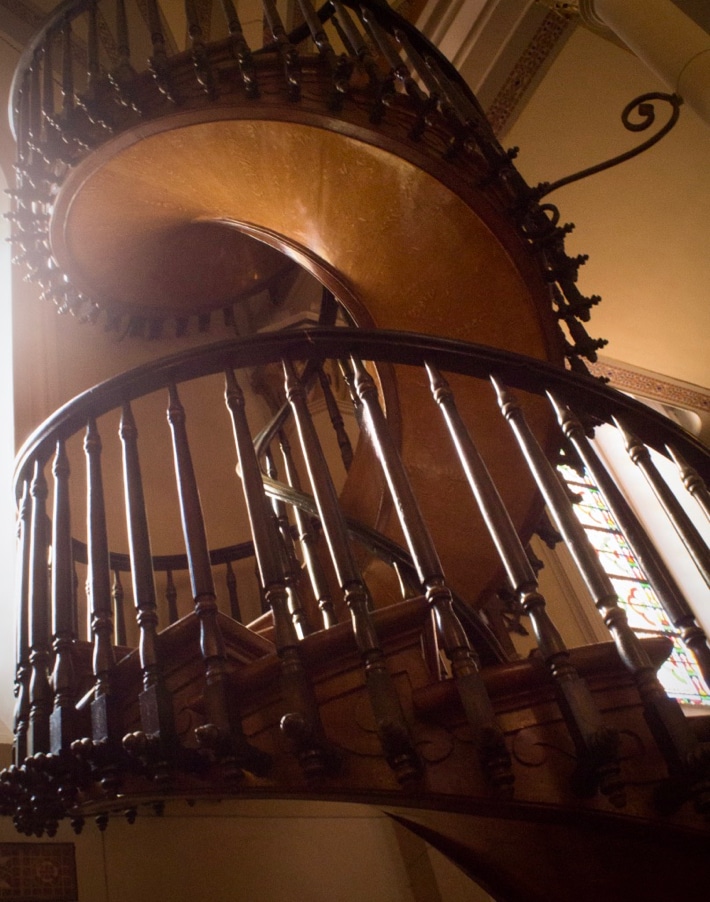
And in this trip, it didn't suck. The driving was easy, even when your little Nissan Versa was getting pushed around by the mountain winds. It was special and enjoyable and, most of all, a part of this trip. It's not a change in the everyday — where driving stress sometimes pops up — but it's so, so much less. And that makes life so, so much more.
So you take a vacation. And it works; you come back recharged. Instead of snapping at your family, you tell them stories of your trips, and share gifts with them. You tell your teammates to take vacations. You bring your best. You get promoted! You[12] have happiness and love and peace. And it's not all because of the vacation, of course the vacation is part of a whole set of similar decisions; but it's also not not because of the vacation. Because the vacation, it is amazing. Every minute, fascination, learning, and, most of all, happiness. Imagine that.
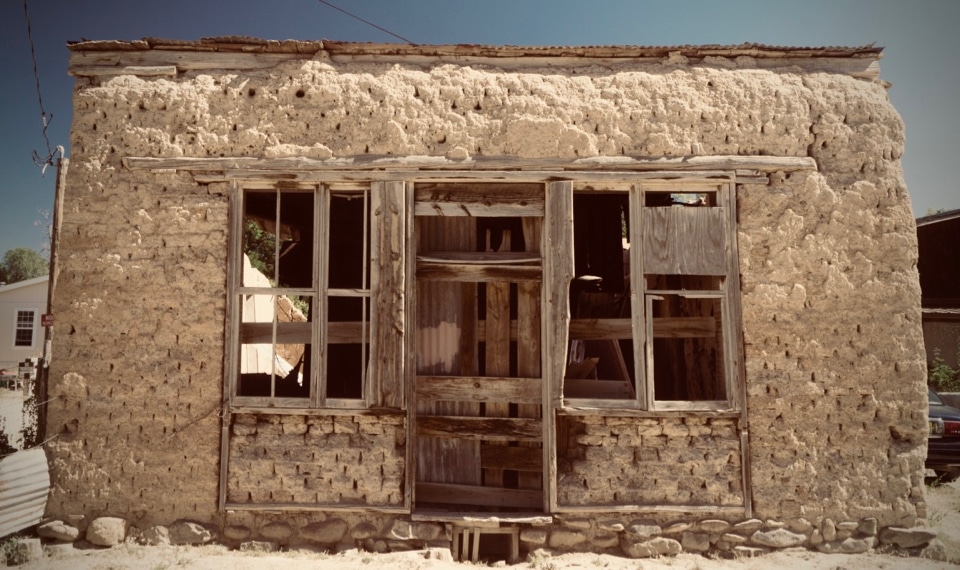
The rest of my trip photos are on Smugmug
#####
And every other job for a decade or more before, but that's another story of bad decisions for another time. ↩︎
Which, much to the surprise of one of your co-workers, is actually a state in the Union and not a part of Mexico. ↩︎
You were landing at 1:30pm, a fine time to get on the road. ↩︎
Although this new one is... noticeably more expensive. But that's part of this vacation idea: not worrying. It's not so much more expensive that you can't save money later, at home, by bringing your lunch every day and not getting fancy coffees and things like that. You're privileged to make as much money as you do — whether or not that's good is another of those stories for another time — and this is a moment to both use that and be thankful for it. Being thankful is also a story for another time, but let's remember to be thankful through this whole trip. ↩︎
You vow to download the local map to Google Maps later, and it saves your bacon later. Mmm, bacon. ↩︎
Contemporary British settlements back East were fortified villages, not just some farming family in the middle of nowhere, on its own. ↩︎
They loudly advertise "100% Agave!" on their menu... But all margaritas are 100% agave, because all tequila is 100% agave, or you can't label it as tequila in either Mexico or the US. ↩︎
Later, you listen to a podcast on the 1680 Pueblo Revolt, and learn how the Puebloan people actually kicked out the Spanish and fought them hard enough that, even when the Imperial troops returned, they didn't try to re-establish the encomienda system that drove so many native peoples into slavery throughout the Spanish empire. ↩︎
Which is undeniably shocking and a sad sign of how our society lifts up non-male artists. Frankly, I had expected Russia or China to have a museum that met this standard, but I guess socialism may free many women but not celebrate them as individuals. ↩︎
To be clear, there's nothing wrong with me being uncomfortable about the criticism of the relationship between Native Americans and the immigrants who came later; we destroyed countless cultures and nations in our growth across the continent. I didn't personally send smallpox blankets to Native communities but that is something my nation absolutely did, and experiencing negative emotions because of that is perfectly normal and desirable. ↩︎
A movement that was, interestingly for the US, centered around land redistribution. Most Americans have been spoiled by our wide open spaces, and miss that land reform is a key issue in the vast majority of race and class conflicts in other countries. We often see an activist talking about land redistribution and classify them as weird Commies, but the reality is that they're simply talking about the topics that have been important in most countries for the past 200 years. ↩︎
You wrote this entire blog entry in the second person because on your vacation you read the incredible The Fifth Season, written in that style, and you were inspired. One of the best books you've read in years, both from concept and from literary execution. ↩︎